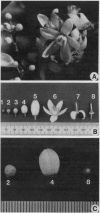Abstract
Flower buds of `Valencia' orange (Citrus sinensis [L.] Osbeck) were able to fix 14CO2 into a number of compounds in their own tissues under both light and dark conditions. The total incorporation, however, was about 4-fold higher in the light than in the dark. In the light, 50% of the total 14C label was found in the neutral fraction (sugars), 22% in the basic fraction (amino acids), and 26% in the acid-1 fraction (organic acids). In the dark, about 95% of the 14C label was incorporated into the basic and acid-1 fractions. Activities of ribulose bisphosphate carboxylase and phosphoenolpyruvate carboxylase (expressed in micromoles CO2 per milligram protein per hour) averaged 1.95 and 8.87 for the flower buds, and 28.5 and 3.6 for the leaves, respectively. The ability of orange flower buds to fix ambient CO2 into different compounds suggests that this CO2 assimilation may have some regulatory role during the early reproductive stages in determining citrus fruit initiation and setting.
Full text
PDF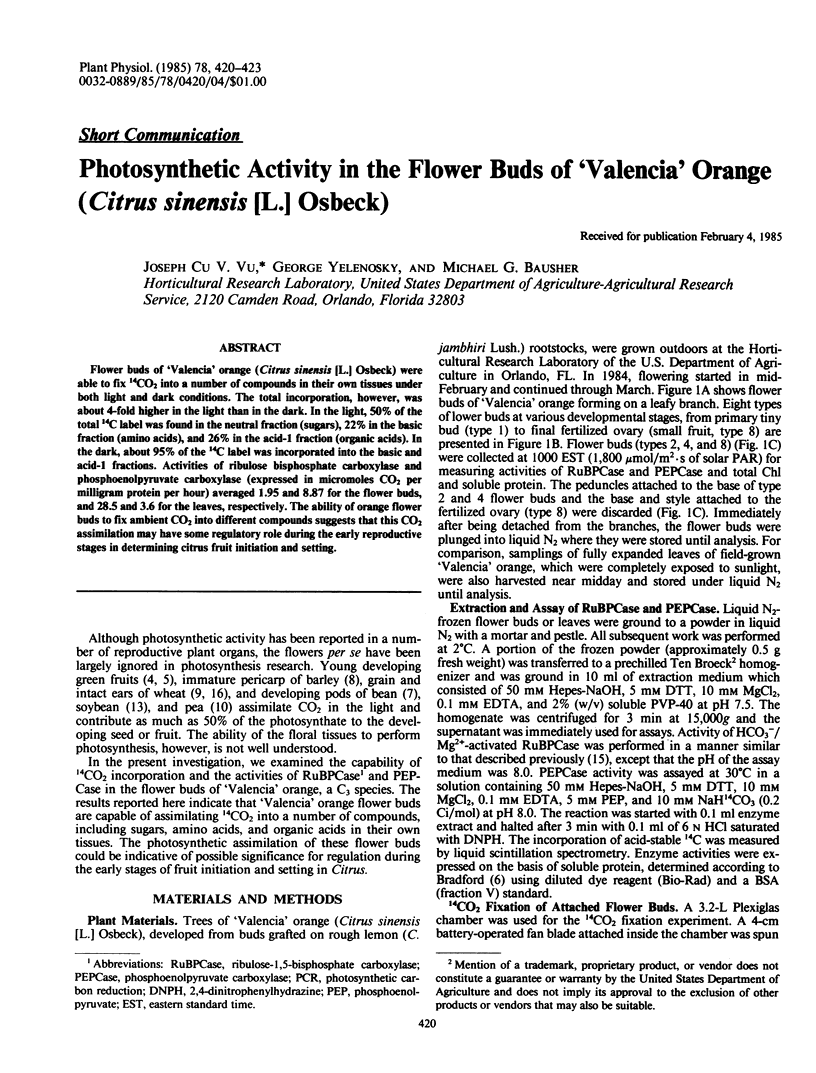
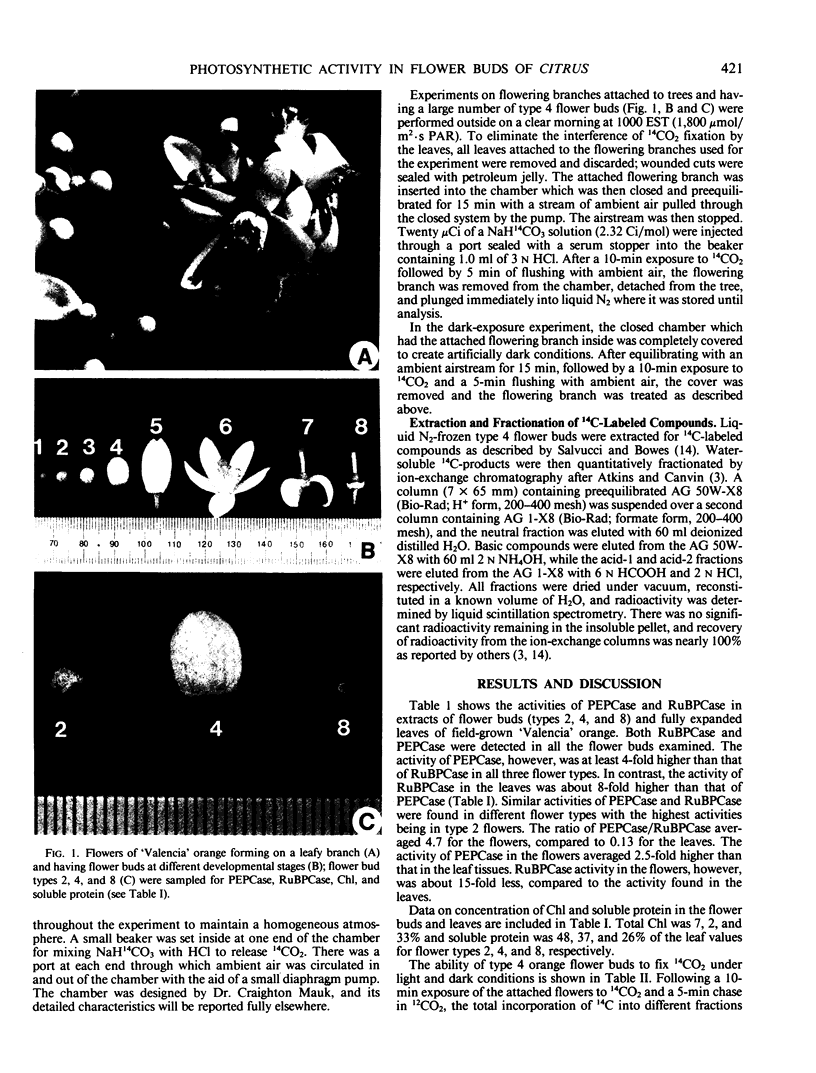
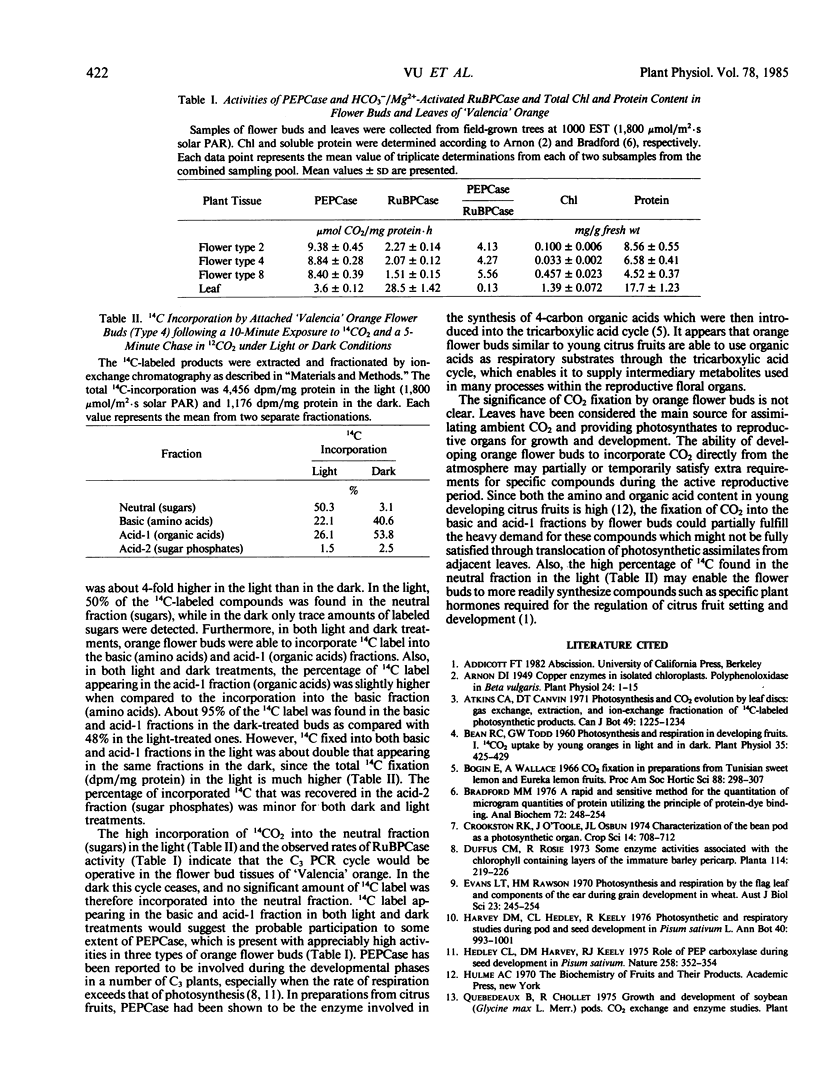
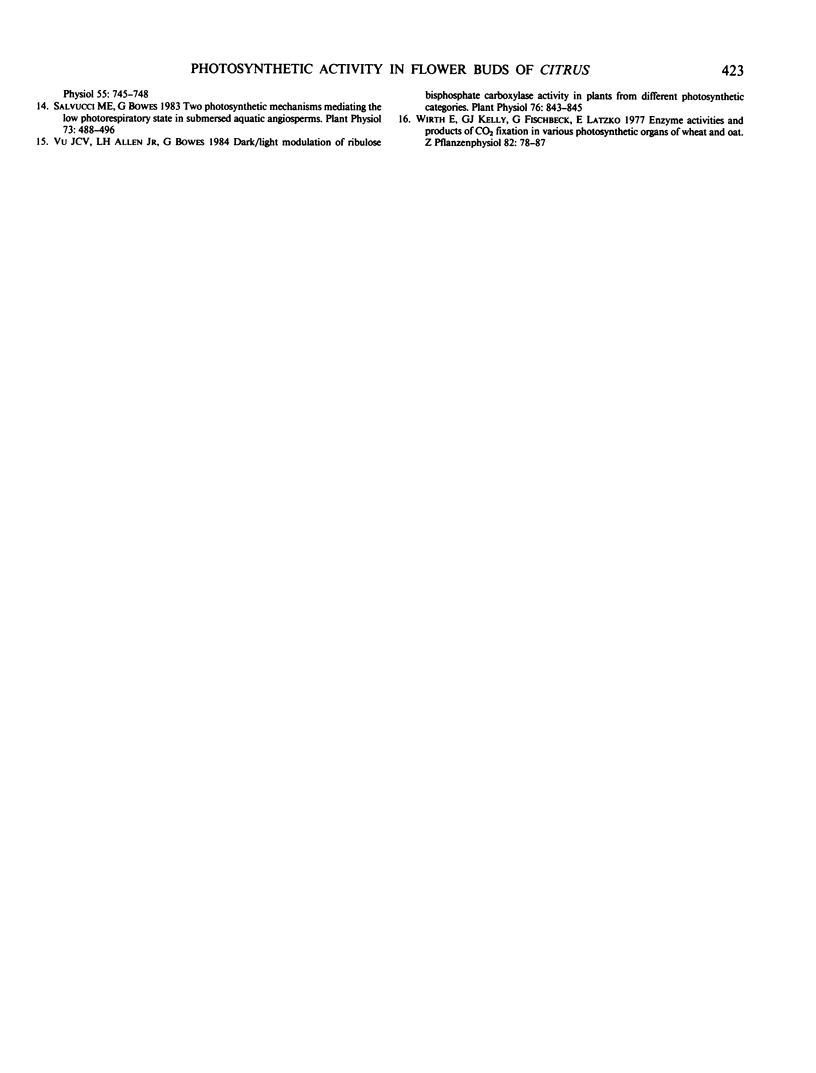
Images in this article
Selected References
These references are in PubMed. This may not be the complete list of references from this article.
- Arnon D. I. COPPER ENZYMES IN ISOLATED CHLOROPLASTS. POLYPHENOLOXIDASE IN BETA VULGARIS. Plant Physiol. 1949 Jan;24(1):1–15. doi: 10.1104/pp.24.1.1. [DOI] [PMC free article] [PubMed] [Google Scholar]
- Bean R. C., Todd G. W. Photosynthesis and Respiration in Developing Fruits. I. CO(2) Uptake by Young Oranges in Light and in Dark. Plant Physiol. 1960 Jul;35(4):425–429. doi: 10.1104/pp.35.4.425. [DOI] [PMC free article] [PubMed] [Google Scholar]
- Bradford M. M. A rapid and sensitive method for the quantitation of microgram quantities of protein utilizing the principle of protein-dye binding. Anal Biochem. 1976 May 7;72:248–254. doi: 10.1006/abio.1976.9999. [DOI] [PubMed] [Google Scholar]
- Quebedeaux B., Chollet R. Growth and Development of Soybean (Glycine max [L.] Merr.) Pods: CO(2) Exchange and Enzyme Studies. Plant Physiol. 1975 Apr;55(4):745–748. doi: 10.1104/pp.55.4.745. [DOI] [PMC free article] [PubMed] [Google Scholar]
- Salvucci M. E., Bowes G. Two photosynthetic mechanisms mediating the low photorespiratory state in submersed aquatic angiosperms. Plant Physiol. 1983 Oct;73(2):488–496. doi: 10.1104/pp.73.2.488. [DOI] [PMC free article] [PubMed] [Google Scholar]
- Vu J. C., Allen L. H., Bowes G. Dark/Light modulation of ribulose bisphosphate carboxylase activity in plants from different photosynthetic categories. Plant Physiol. 1984 Nov;76(3):843–845. doi: 10.1104/pp.76.3.843. [DOI] [PMC free article] [PubMed] [Google Scholar]



